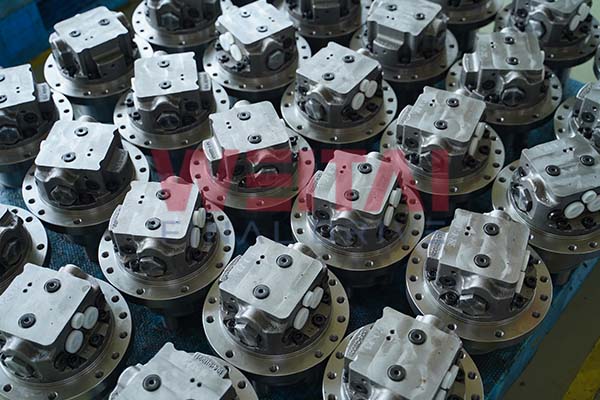The final drive motor is a vital component in heavy machinery, providing the necessary power and torque for movement. Proper maintenance of this motor is crucial for ensuring the longevity and efficiency of your equipment. Neglecting maintenance can lead to costly repairs, unexpected breakdowns, and reduced operational efficiency. In this blog post, we’ll discuss essential maintenance tips to help you extend the life of your final drive motor.

1. Regular Inspections
Conducting regular inspections is the first step in maintaining your final drive motor. Frequent checks allow you to identify potential issues before they become major problems.
What to Look For:
- Leaking Hydraulic Fluid: Look for signs of fluid leaks around the motor. Even small leaks can lead to significant issues over time.
- Unusual Noises: Pay attention to any grinding, clunking, or whining sounds during operation. These noises can indicate internal wear or damage.
- Cracks or Damage: Inspect the motor housing and mounting brackets for cracks or signs of physical damage.
2. Monitor Hydraulic Fluid Levels and Quality
Hydraulic fluid is essential for the operation of hydraulic final drive motors. Maintaining the correct fluid level and ensuring its quality is crucial for optimal performance.
Tips for Fluid Maintenance:
- Check Fluid Levels Regularly: Ensure the hydraulic fluid is at the recommended levels. Low fluid can lead to overheating and reduced efficiency.
- Change Fluid Periodically: Follow the manufacturer’s guidelines for fluid change intervals. Contaminated or degraded fluid can harm internal components.
- Use Quality Fluid: Always use hydraulic fluid that meets the specifications recommended by the manufacturer to ensure compatibility and performance.
3. Inspect and Replace Filters
Filters play a critical role in keeping the hydraulic system clean. Dirty filters can restrict fluid flow and lead to increased wear on the final drive motor.
Maintenance Steps:
- Check Filters Regularly: Inspect hydraulic filters for clogs or debris and replace them according to the manufacturer’s recommendations.
- Clean or Replace: Depending on the type of filter, either clean it or replace it entirely to ensure optimal fluid flow.
4. Check Seals and Gaskets
Seals and gaskets prevent fluid leaks and protect the internal components of the final drive motor from contamination. Over time, they can wear out and become less effective.
Seal Maintenance Tips:
- Inspect for Wear: Regularly check seals and gaskets for signs of wear, cracks, or deformation.
- Replace as Needed: If you notice any damage or leaks, replace the seals promptly to prevent further issues.
5. Keep the Motor Clean
Dirt and debris can lead to overheating and wear on the final drive motor. Keeping the motor clean is essential for maintaining its efficiency.
Cleaning Tips:
- Wipe Down Regularly: Use a damp cloth to clean the exterior of the motor, removing dirt and grime.
- Avoid High-Pressure Washers: While cleaning, avoid using high-pressure washers directly on the motor, as they can force dirt and moisture into sensitive areas.
6. Monitor Operating Temperatures
Excessive heat can damage the internal components of the final drive motor. Monitoring operating temperatures is essential for preventing overheating.
Temperature Management:
- Use Temperature Gauges: Install temperature gauges to monitor the operating temperature of the final drive motor.
- Address Overheating Issues: If you notice temperatures exceeding the manufacturer’s specifications, investigate the cause—such as low fluid levels or blocked cooling systems—and resolve the issue immediately.
7. Follow Manufacturer Guidelines
Every final drive motor has specific maintenance requirements outlined in the manufacturer’s manual. Following these guidelines is crucial for ensuring optimal performance and longevity.
Key Manufacturer Recommendations:
- Maintenance Intervals: Adhere to the recommended service intervals for inspections, fluid changes, and filter replacements.
- Parts Compatibility: When replacing parts, always use genuine or recommended parts to ensure compatibility and performance.
Conclusion: A Commitment to Care
Maintaining your final drive motor is not just about keeping the machinery running; it’s about investing in the longevity and efficiency of your entire operation. By following these maintenance tips—regular inspections, fluid monitoring, filter checks, seal inspections, cleanliness, temperature management, and adhering to manufacturer guidelines—you can significantly extend the life of your final drive motor and ensure optimal performance.
Remember, a well-maintained motor contributes to increased productivity, reduced downtime, and lower overall operating costs. Investing time and resources into proper maintenance will pay off in the long run, keeping your equipment running smoothly for years to come.
Post time: Sep-18-2024
